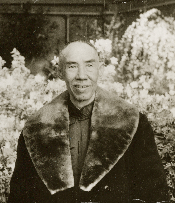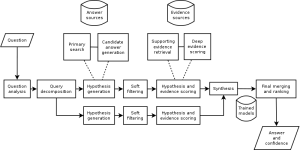
Blaise Pascal, Mathematician
Apart from his legendary status as a mathematician and early inventor of a type of calculator, Blaise Pascal (1623-1662) is also know for his forays into early notions of probability theory, which he applied to a discussion on why betting on the actual existence of God has a type of logic to it, based on likelihoods and probabilities. This discussion, presented in his monogram Pensées – ‘Thoughts’ (1670), and known popularly as Pascal’s Wager, has occupied the minds of philosophers and theologists over the ages, often attracting orthodox critics who suggested that such a discussion is somehow too blasphemous for (certain) Christians to seriously consider.
Pascal’s Wager proposes the following: (excerpted from Pensées, Section III, Note 233, and summarised as numbered propositions in a Wikipedia article):
1. God is, or God is not. Reason cannot decide between the two alternatives.
Pascal asserts that we cannot use arguments based on logic to prove the existence, or otherwise, of God. The inference here is that there are only two possibilities possible, the actual existence of God, independent of reason, logic or belief, or the non-existence of God. Either possibility would need to be absolute, i.e., truly independent of the existence, or otherwise, of ourselves.
2. A Game is being played… where heads or tails will turn up.
Here Pascal is framing his wager as a simple binary event, based purely on chance, which involves a person betting on his or her own future. What is clearly missing is the other player. Is it actually oneself?– which suggests a rather conflicted view of personal existence – or, perhaps, God?
3. You must wager (it is not optional).
This third step is comparable to asking someone to choose to either move away from where they are standing or to stay where they are. If they do nothing (i.e. reject the request), they effectively accede to the second choice of staying put. The end result is the same; as if they had consciously decided not to move away. This seems like a slightly unfair premise to me – i.e. that the choice presented is purportedly a pure, equally-weighted binary choice, where in fact the choice is forced, whether the person chooses to participate in the wager or not. Thus, as Pascal rightly determines, the wager is not actually optional.
4. Let us weigh the gain and the loss in wagering that God is. Let us estimate these two chances. If you gain, you gain all; if you lose, you lose nothing.
If a belief in God is somehow proven correct, there is an assumption that the God of your faith will reward your belief. This is a rather self-fulfilling prophecy based on the premise that the type of God you said you believe in is benevolent and will always reward believers. None of this is actually stated by Pascal, though, and must be inferred from the logic step itself.
The idea that betting on the proposition that God exists and later finding out that you were wrong is somehow a lossless outcome is not proven, at least in his assumption as stated above. Very few people can easily deal with the discovery of a false belief, often leading to regret, cynicism and loss of hope – hardly a lossless outcome.
5. Wager, then, without hesitation that He is. (…) There is here an infinity of an infinitely happy life to gain, a chance of gain against a finite number of chances of loss, and what you stake is finite. And so our proposition is of infinite force, when there is the finite to stake in a game where there are equal risks of gain and of loss, and the infinite to gain.
The logic here is more a suggestion that the reader take a position, and not just any position, but the one supporting the idea of the existence of God. Pascal supports this suggestion by spelling out the alternatives, effectively a pitch for belief. Once again, he describes the wager as having “equal risk of gain and loss” which rather contradicts his claim, above, that losing actually loses nothing.
6. But some cannot believe. They should then ‘at least learn your inability to believe…’ and ‘Endeavour then to convince’ themselves.
This is Pascal’s pitch for greater self-awareness and also an encouragement to take a position, as if the only reason for non-belief is some flaw in the reader’s character that is blocking their ability to believe what, to Pascal at least, is an acceptable notion.
More than anything, I see this as Pascal’s entreaty to take a “leap of faith” as a means of resolving uncertainties in life (e.g. questions such as; “Why are we here? What is life’s purpose?”, etc.) that can’t be analysed and explained through pure reason.
Uncertainty
Pascal discusses uncertainty in life extensively in Pensées, but the two categories that seem to me to be highly significant are: uncertainty in reason, and uncertainty in scepticism. In the former case, he states:
”There is nothing so conformable to reason as this disavowal of reason.“ (Pensées, Note 272)
Apart from the fact that this seems to address a rejection of reason rather than a mere uncertainty about it, one way of interpreting the statement is that scepticism is healthy, while a second way would promote the idea that people who reject the logical propositions he presents are uncertain about reason itself. My own interpretation is that he is commenting on the nature of reason and the fact that ultimately there is no escape from it, even for those who reject it.
In discussing uncertainty in scepticism, Pascal states:
“It is not certain that everything is uncertain.” (Pensées, Note 387)
This self-referential statement seems to be self-defeating, almost proving the case for uncertainty, although the fact that something is not certain is not exactly the same as something being uncertain. To illustrate the point; if I state that:
“All citizens of Lebanon are speakers of Arabic”
it would be reasonable for a listener to remark that I couldn’t possibly be certain about the truth of my statement without interviewing all of Lebanon’s citizens, a clearly impossible, conditional task. This is qualitatively different from a listener question such as: “Are you sure about that?” which raises doubts about the statement’s truth, but doesn’t actually contradict it.
My take on Pascal’s statement is that he is promoting the idea that the statement that everything is uncertain has little to do with what we mostly observe in our daily lives. We begin each day certain that the sun will rise, that bridges will stay intact as we cross them and that the laws of physics, such as the gravitational force that keeps us attached to the Earth, will continue to apply. To live any other way would be to succumb to fear, uncertainty and doubt.
Of course, non-material notions such as uncertainty about another’s intent or sincerity are what I would call healthily sceptical, but they should never rule a person’s existence to the point where mitigation becomes impossible. Certainty goes hand in hand with hope, which has to be a good thing, most of the time.
Reference
Pascal, Blaise (1670). Pensées. English translation by John Walker (1688).











































